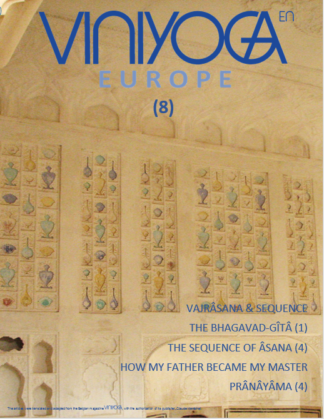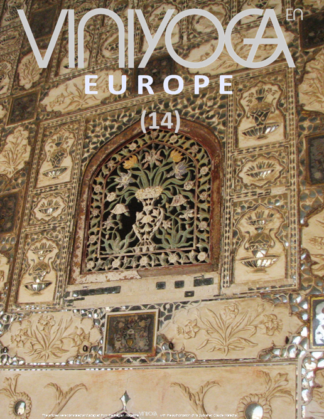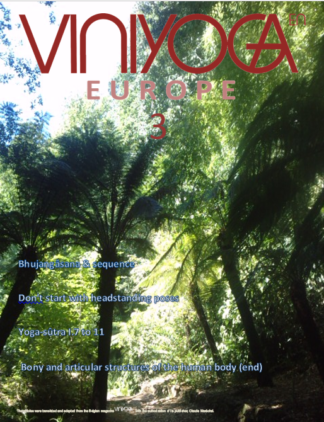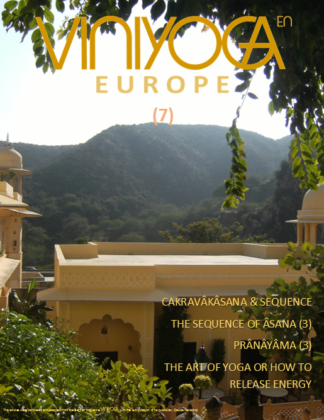Description
(33 pages)
CAKRAVÂKÂSANA
This posture is considered to be a back bending pose; it is on all fours, asymmetric and its difficulty is average.
Some of its applications offer interesting possibilities of delicate and precise action on the vertebral column. Its modified execution combined with vajrâsana is often used as counter-posture for more intense back bending poses.
By Claude Maréchal
SEQUENCE
As an example of application of cakravâkâsana, this simple sequence uses this pose three times in different ways.
By Claude Maréchal
THE SEQUENCE OF ÂSANA (3)
This second article about the sequence and its intensity develops the relation between physical effort and the object of attention (bhâvana).
Using an example, it details how to simplify or intensify the physical effort and breathing. This allows the pose to be adapted to the characteristics of the person in order for “stability-comfort” (sthira-sukha) to be experienced.
By Claude Maréchal
PRÂNÂYÂMA (3)
The fundamental techniques of breath control (prânâyâma) are: ujjâyî, anuloma ujjâyî, viloma ujjâyî, nâdî shodhana and shîtalî. These breath exercises aim to balance and concentrate vital energy (prâna) inside the body.
By Claude Maréchal with the collaboration of Sylviane Gianina
THE ART OF YOGA OR HOW TO RELEASE ENERGY
How can we consider energy in the framework of the practice and study of yoga? How to apply this to different aspects of life?
By François Laurin
YOGA-SÛTRA I.19 and 20
Yoga leads to extraordinary states of consciousness. Aphorism I.19 gives indications to those people who have already attained those levels, while the next aphorism (I.20) is meant for ordinary people; it describes the necessary qualities for progressing on the path of yoga.
Comments by Professor T. Krishnamacharya; presentation and explanations by T.K.V. Desikachar





